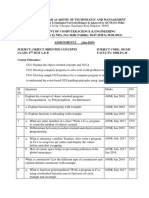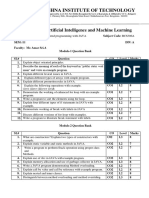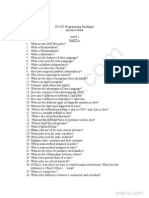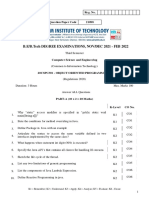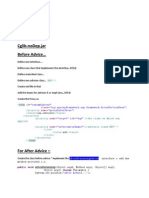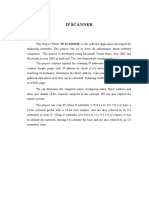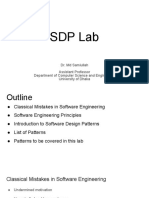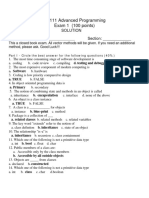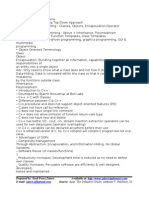0% found this document useful (0 votes)
16 views7 pagesJava QB
The document outlines a comprehensive curriculum for Java programming, covering topics such as Java basics, inheritance, packages, interfaces, exception handling, multithreading, file handling, applets, and event handling. It includes various short answer, long answer, and problem-solving questions aimed at assessing understanding and application of Java concepts. Each unit is structured to facilitate learning through theoretical explanations and practical programming tasks.
Uploaded by
Aryan GamerCopyright
© © All Rights Reserved
We take content rights seriously. If you suspect this is your content, claim it here.
Available Formats
Download as PDF, TXT or read online on Scribd
0% found this document useful (0 votes)
16 views7 pagesJava QB
The document outlines a comprehensive curriculum for Java programming, covering topics such as Java basics, inheritance, packages, interfaces, exception handling, multithreading, file handling, applets, and event handling. It includes various short answer, long answer, and problem-solving questions aimed at assessing understanding and application of Java concepts. Each unit is structured to facilitate learning through theoretical explanations and practical programming tasks.
Uploaded by
Aryan GamerCopyright
© © All Rights Reserved
We take content rights seriously. If you suspect this is your content, claim it here.
Available Formats
Download as PDF, TXT or read online on Scribd
/ 7



